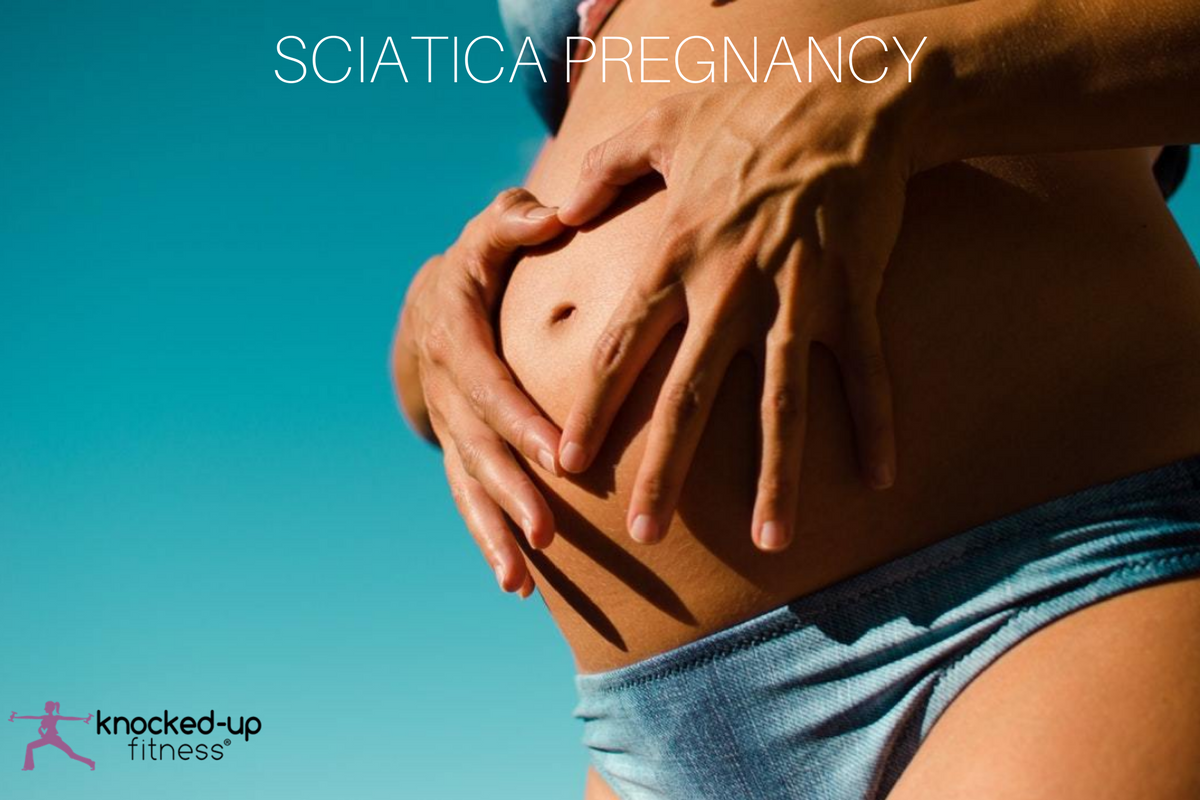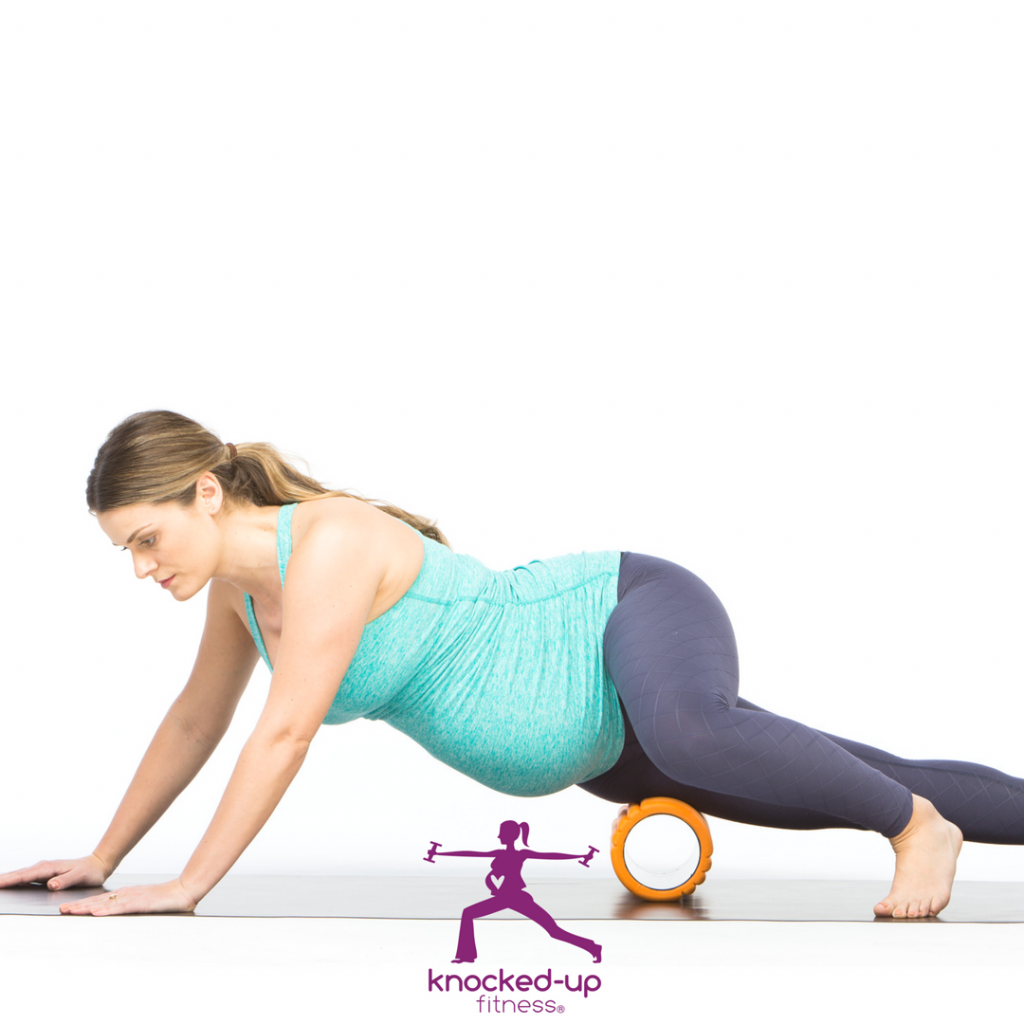More than 3 million Americans suffer from sciatica; an all too common and severe condition in which pain runs and radiates throughout the sciatic nerve. And although people of all ages and physical conditions suffer from this highly discussed health issue, this condition can be especially prevalent in expectant women; thus making the issue of sciatica pregnancy a vital topic of discussion for today’s moms to be.
Between 50-80 percent of pregnant women report symptoms of back pain related to sciatica; particularly during the second and third trimesters of the pregnancy term. So it is evident, then, that sciatica pregnancy is a major issue among expectant mothers.
Unfortunately, a good number of mothers accept any and all forms of pain and discomfort as part and parcel of the pregnancy experience; feeling that the joys of motherhood will more than compensate for any degree of suffering that she endures. Yet thanks to the wonders of modern medicine, no one has to accept or abide by the pain of sciatica pregnancy; a condition that can indeed be remedied and perhaps even resolved via various methods.
Yet before we delve too deeply into the problem of sciatica pregnancy, we first should take a look at the overall medical condition known as sciatica.
-
- The sciatic nerve is the most sizable nerve in the body, running from the lower back to the feet.
-
- In the condition known as sciatica, this nerve becomes agitated or compressed in some manner.
-
- Sciatica is a painful condition, characterized by shooting pain, numbness and tingling along the nerve.
-
- Sciatica pain can vary in intensity, ranging from mild to severe, dull to sharp.
-
- Sciatic pain can be constant or simply sporadic.
-
- In addition to the back and legs, sciatic pain can strike one’s thighs, rear end, feet, and hips; perhaps radiating and racing from one body part to another.
-
- Generally speaking, sciatica is a treatable condition.
-
- Sciatica is highly treatable via medical techniques supervised by a physician.
-
- Sciatica is generally self-diagnosed, with X-rays or other imaging tests not often required to identify and assess this condition.
- Sciatica generally occurs when a herniated disk or bone spur applies pressure to the nerve.
Sciatica pregnancy is a distinctive form of this common condition, in that its causes and symptoms differ somewhat from other varieties. Indeed, sciatica pregnancy is a special form of sciatica that requires special care.
On a general basis, sciatica pregnancy is characterized by these causes:
-
- An increase in fluid retention during pregnancy can pressure the part of the sciatic nerve located beneath the uterus.
-
- The uterus grows in size during pregnancy, pressuring the portion of the sciatic nerve located in the lower section of the spine.
-
- The growth of the breasts and stomach results in a marked shift in one’s center of gravity; leading to the tightening of the pelvis and the pinching of the sciatic nerve.
-
- Unlike other forms of this condition, sciatica pregnancy is generally not caused by a herniated disc.
-
- The muscle tension and unstable joints generally associated with pregnancy, along with pelvic bone pain, sacroiliac joint problems, and piriformis syndrome (muscle pain emanating from the buttocks) generally encountered during this transformative time in a woman’s life, all are common causes of sciatica pregnancy. This owes to the fact that, during pregnancy, hormones such as relaxin increase substantially in the system; thus causing the ligaments to stretch and loosen up considerably.
- The weight of your baby can add additional pressure to your pelvis and hip joints; thus worsening any instance of joint discomfort or piriformis syndrome, which in turn can lead to instances of sciatica pregnancy. In addition, the position of the infant in the womb can place additional pressure on the sciatic nerve.
With all of the pain and discomfort that can come as part and parcel of the pregnancy experience, how can one identify an instance of sciatica pregnancy? Here are a few common signs and symptoms of sciatica pregnancy:
-
- The occurrence of pain radiating along one side of the buttocks or down your leg. The feeling of pain or discomfort does not remain at one centralized location of the body but travels or blazes a trail from one anatomical region to another.
-
- Pain traveling along the path of the sciatic nerve, originating from the buttocks down the back of the thigh, and finally to the foot.
-
- Sharp or dull pain, possibly burning or shooting. Although always troublesome, sciatica pain does not always affect every patient in the same way or at the same intensity. Sciatica pregnancy pain may strike the body in the form of a dull, low-level ache (just enough to be annoying) or at the worst a burning, shooting pain that may feel like the symptom of a more serious condition.
-
- A feeling of numbness in the afflicted area. You may not feel much of anything in an area of the body afflicted with sciatica pregnancy; instead of experiencing numbness or lack of feeling in the region. Much like the pain, this feeling of numbness may move or radiate from place to place.
-
- A sensation of weakness in the afflicted area. If you feel any undue or inordinate weakness in the back, thigh, foot, etc., perhaps to the point that you cannot walk, move, lift, shift, etc., then you may be dealing with a sciatica pregnancy condition.
-
- A pins and needles sensation in the affiliated area, that likens to a prickling feeling, also can be symptomatic of sciatica pregnancy. The sensation might be similar to one experienced when your foot or leg ‘falls asleep’’ so to speak, although perhaps more intensely and more frequently in nature.
- Painful or stilted walking, sitting or standing. Some women afflicted with sciatica pain pregnancy can’t walk. Or, at the very least, they have great difficulty performing those everyday movements and motions that they once took for granted. They may be unable to stand erect, to walk across the room, or even to sit without pain and discomfort.
It is also important to note that sciatica can vary in intensity and degree throughout the various stages of one’s pregnancy. Indeed, sciatica in early pregnancy is a rare occurrence, but it does happen, sometimes as early as three to five weeks. Some expectant mothers report shooting pains running down their backs, buttocks, and legs in the earliest weeks of pregnancy, and may experience acute discomfort while walking or sitting.
Although the experience of sciatica in pregnancy first trimester is a rare one, it can naturally occur in pregnancy when the relaxin hormone softens the leg ligaments, relaxing the joints to allow the expansion of the pelvis; thus helping to prepare your body for the latter stages of pregnancy. And even during the earliest weeks of this life-changing experience, the retention of fluid in the body can cause a feeling of heaviness and cramps in the legs, another possible sign and symptom of pregnancy sciatica.
The experience of sciatica during pregnancy second trimester and pregnancy third trimester is far more common, and for several reasons:
-
- During the second trimester of pregnancy, both you and your baby are growing in size; and the burgeoning fetus is likely to place more pressure on and perhaps even compress one’s sciatic nerve. In addition, your level of fluid retention is likely to increase sharply during the later months of your pregnancy. As is the case with obesity, the additional weight retained during pregnancy can be a contributing factor to sciatica pregnancy.
-
- As the fetus’ body shifts into the proper birth position during the third trimester, its head likely will rest on the surface of the mother’s sciatic nerve.
-
- The growth and expansion of your uterus will transpire at its highest level during your third trimester of pregnancy, with the enlarged uterus possibly applying additional pressure to the sciatic nerve.
-
- During the second and third-trimester growth of your breasts and stomach will move your center of gravity forward and extend your lordotic curve (the dip situated above the rear end); a move that may cause the tightening or pinching of the sciatic nerve.
-
-
- At this stage of pregnancy, sciatica pregnancy might strike on one or both sides of the body–although the condition is more likely to afflict one side.
- Sciatica pregnancy might intensify in feeling and degree, not to mention frequency, during these final stages of pregnancy.
-
In addition, the effects of sciatica pregnancy sometimes can be felt after the child is born. This is primarily due to common imbalances of posture in the hip and pelvic areas, as well as a general weakness of the core region. Until you correct your posture and ‘straighten up,’ so to speak, the imbalance in posture might continue to weigh down your sciatic nerve and, to most, painful and uncomfortable effect.
Sciatica pregnancy relief comes in many and varied forms; although depending on the intensity and frequency of the pain, some simply choose to take a wait and see approach or, more accurately, rest and see. They may feel that the only way to resolve their instance of sciatica pregnancy is to rest, relax and wait it out until all of the pain subsides.

While a certain amount of rest and relaxation is necessary throughout one’s term of expectancy, today’s busy woman, one who is juggling the demands of pregnancy with the challenges of her career, family and social lives, cannot afford to sit about and rest away her sciatica pregnancy condition until the baby is born.
With that in mind, it may be time to take a more active approach to the treatment and resolution of sciatica pregnancy issues. Here are some of the tools you will need to relieve and remedy even the toughest instances of sciatica pregnancy:
- Prepare your body for pregnancy, birth and postpartum recovery
- Try the Push Prep Method, help prepare your body for delivery
- Try Prenatal Yoga Sculpting Workouts
- Try Prenatal TRX and BOSU tutorials
- Try Prenatal Reformer Pilates Workouts and Tutorials
- Eat gluten-free, dairy-free and vegan diets
- Find out how to Minimize Diastasis Recti During Pregnancy {even start healing NOW}

-
- Learn how to safely and effectively strengthen your deep core which can help give your pelvis and sacrum the support it needs to help aid in sciatic relief.
-
- Incorporate a couple of exercises to help in release tightness around your sciatica pain while also improving your posture as your pregnancy progresses.
-
- A warm or cold pack or pad. As with most instances of bodily pain, the application of a warm or cool compress can bring infinite soothing and comfort to the afflicted area. Although not a precise cure for sciatica, the application of a warm or cool pad will succor and perhaps even numb the aching area.
-
- A firm mattress and a pillow that may be specially designed for pregnant women. Sleep with one pillow beneath the head and another between the legs; thus alleviating any and all pressure on the sciatic nerve. The expectant mom also may wish to sleep on one side, whichever side happens to be the least affected by sciatica pregnancy pain. In addition, a body pillow might be an advisable buy; this owing both to its comfort and its full body support, not to mention its ability to accommodate those who prefer to sleep on their sides.
-
- A swimming pool. Aside from being the most natural and healing of elements, water holds within it a divine buoyancy that both supports and relieves the body. And while pregnant, a good swim can relieve pressure on the spine and on the sciatic nerve. Just be sure that you consult your doctor before swimming during pregnancy.
-
- Massage. A healing and professionally conducted therapeutic massage, one that kneads and permeates taut and tightened muscles with intensive strokes, can do much to relieve the effects of sciatica pregnancy. Prenatal massage, in general, is an optimum means of relaxing and rejuvenating the expectant mother at all stages of pregnancy; especially if she happens to be suffering from an instance of sciatica pregnancy or other forms of bodily pains or strains.
-
- Acupuncture. A trusted and effective means of alleviating the effects of any number of medical conditions, acupuncture is an ancient Chinese healing art involving the artful application of needles (and at times the practitioner’s fingers) to pressure points in the body; in this case, to the back, the leg, the thigh, the buttocks, or any other area affected by sciatica pregnancy. The entire aim of acupuncture is to correct and regulate energy imbalances in the affected region. And The National Institute of Health has recommended acupuncture as a viable form of therapy for low back pain; so it only makes sense to apply this time-honored holistic method to the treatment of the sciatica pregnancy condition.
-
- Chiropractic adjustment. As is the case with massage, a therapeutic adjustment performed by a chiropractor has been known to relieve both mild and severe instances of sciatica. Just be certain that your chosen chiropractor knows that you’re pregnant, and treats you accordingly.
-
- A sciatica cushion. Designed to comfort and assist patients facing all conditions and instances of sciatica, a specially designed sciatica pad or cushion will fit most chairs and even the driver’s seats of automobiles. These specialized cushions, which are sometimes square in shape, other times crafted in the shape of a saddle, are ergonomically designed to comfort and coddle a body affected by sciatica; making it easier for them to sit for longer periods of time.
-
- Yoga and meditation. These holistic and deeply therapeutic arts can benefit just about any practitioner at any stage of life. And for the pregnant woman, these deeply spiritual and therapeutic arts can be particularly helpful and healing. As Art of Living.Org explains, “Meditation comes to play a key role when tackling any difficulties that may arise during pregnancy. It can bring relief and help you accept the various stages of your pregnancy. Enabling you to flow through this beautiful phase of your life with ease. Helping you to enjoy the reality that a new life is blossoming inside of you.” Consult your physician and a certified yoga instructor for advice regarding the optimum yoga and meditation poses to meet your needs at this time.
- For more information about many of these options, please visit our Membership Section to learn more about the exciting and innovative Prenatal + Core Rehab Membership!
Of course, a thorough and doctor-supervised regimen of therapeutic exercise just may be the most effective means of dealing with sciatica pain. This is because the act of stretching mobilizes the sciatic nerves and enhances the overall flexibility of the back, along with also strengthening the muscles around your hips, legs and improving your overall posture. While stretching can feel good it’s just as important to strengthen in order to give your pelvis the support it needs for changes during pregnancy.
These days more and more expectant moms are embracing the concept of pregnancy fitness; making a concerted effort to build their strength and flexibility throughout their pregnancy, in an attempt to ensure a healthier pregnancy and delivery–and, perhaps ultimately, a stronger and healthier baby. And when facing an additional health concern such as sciatica pregnancy, then a few simple and highly therapeutic stretches can make all the difference.
Often when first afflicted with the pain and discomfort affiliated with sciatica pregnancy, a patient’s first instinct may be to stretch out their back or leg in an attempt to garner relief, stretching and flexing to release the tension and bodily stress inherent in their joints; this in itself should prove the effectiveness of stretches in responding to any instance of sciatica pregnancy pain. Sciatica stretches pinpoint sciatica pregnancy pains in the legs, pelvis and lower back, in addition to strengthening your core and even your immune system in the process.
Additionally, a good number of fitness experts are recommending sciatic pregnancy medicine ball exercises; this owing to the fact that the medicine ball ranks among the most effective, not to mention enjoyable, a piece of sports and fitness equipment available on today’s health and fitness market.
In general, medicine balls are a soft, flexible, and easy to hold and carry exercise tool that facilitates core strengthening and muscle development. Long a fixture of gymnasiums and fitness studios, these fun and multi-purpose samples of modern exercise equipment also can be flawlessly integrated into just about any exercise program; up to and including those designed to treat mild or severe cases of sciatica pregnancy.
Before beginning any regimen of exercises to relieve and hopefully resolve the effects of sciatica pregnancy pain, be sure to consult your physician; and, if possible, exercise under the supervision of both your doctor and your personal trainer.
Here are some common and highly effective exercises designed to ease the effects of sciatica pregnancy:
Hip Rolls
Pregnancy Ab Exercises
Stop Pulling Your Belly To Your Spine
Wiggle Stretch
Foam Roll Glute release
Some moms tend to accept the condition of sciatica pregnancy as a natural part of childbearing. The fact is that one can cope with and even overcome this common pain in the rear and, for that matter, the back…










3 Comments
Thanks for the information you brought to us. They are very interesting and new. Look forward to reading more useful and new articles from you!
Thank you for making such information article, I can see the efforts and research that you did to make this article worth reading. Will you be able to share something more about the infertility? is there any issue could be developed while treatment of the infertility? I gone through with your other articles which were worth reading as well. Appreciate all your hard work. i also wrote an article which is related to Pregnancy Kit Uses (https://www.elawoman.com/blog/planning-baby/how-to-use-prega-news-kit ).